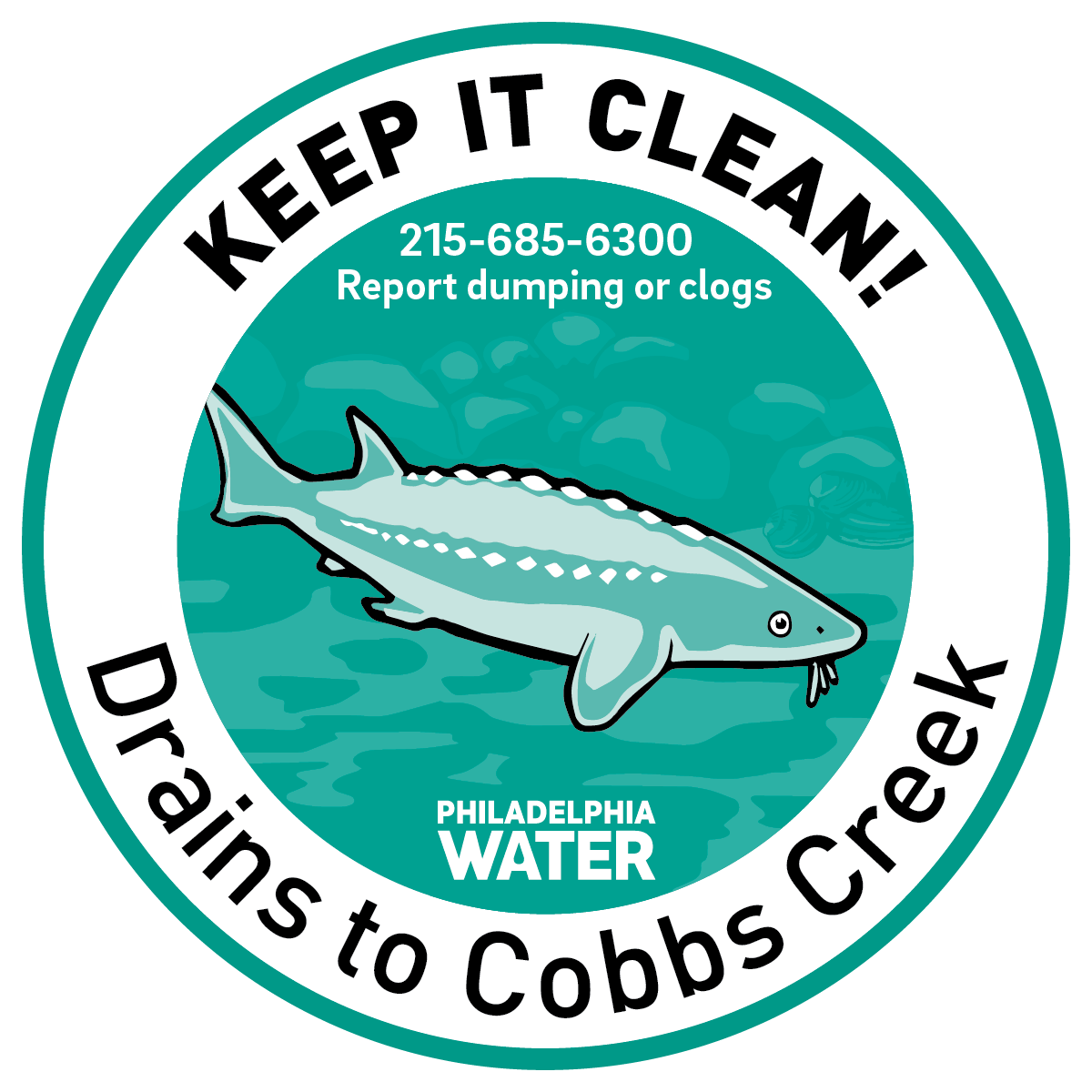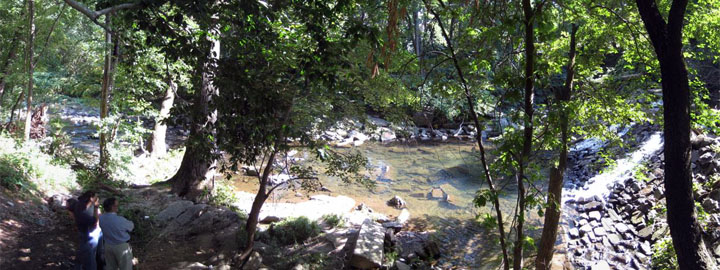The Darby-Cobbs Watershed drains approximately 77 square miles, including portions of Chester, Delaware, Montgomery, and Philadelphia counties. The headwaters of the Cobbs Creek sub-watershed begin in three distinct places: East Branch Indian Creek, which springs up in a small residential neighborhood in Narberth Borough; West Branch Indian Creek in Lower Merion Township in Montgomery County; and Cobbs Creek in Haverford Township, Delaware County.
Watershed Fast Facts
Area
The entire watershed drains approximately 77 square miles; the Cobbs Creek subwatershed is approximately 22 square miles.
Stream Miles
The Darby Cobbs watershed contains approximately 135 linear miles of streams, about 33 miles of which are in the Cobbs Creek subwatershed.
Population
The watershed as a whole is home to about 460,000 residents, but population density is much higher in and near the City of Philadelphia. About 230,000 people, or half of the watershed’s residents, live in the Cobbs Creek subwatershed.
Impervious Cover
Impervious cover is estimated at 45 percent.
Counties/Municipalities
The watershed encompasses areas of Chester, Delaware, Montgomery, and Philadelphia counties, with all or parts of 31 municipalities, including Easttown, Tredyffin, Aldan, Clifton Heights, Collingdale, Colwyn, Darby, East Lansdowne, Folcroft, Glenolden, Haverford, Lansdowne, Marple, Milbourne, Morton, Newtown, Norwood, Prospect Park, Radnor, Ridley Park, Ridley, Rutledge, Sharon Hill, Springfield, Tinicum, Upper Darby, Yeadon, Lower Merion, and Narberth.

Help protect your watershed!
Aquatic wildlife markers are an easy way to remind your neighborhood to keep trash and chemicals out of drains.
